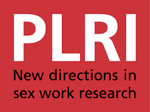Background: To monitor the trajectory of the HIV epidemic among higher risk groups the National AIDS Programme (NAP) has a two prong surveillance system which consists of HIV sentinel serosurveillance and behavioural surveillance surveys (BSS). Both are critical components for assessing and evaluating the overall impact of the national response to HIV and AIDS. The previous round of BSS, in 2003, were conducted among the general population. Between late 2007 and the first quarter 2008, BSS was conducted in female sex workers (FSW) and injection drug users (IDU), for first time by the NAP.
Method: The NAP employed respondent driven sampling (RDS), as a new method appropriate for the recruitment of hidden populations such FSW and IDU. This method relies on participants who meet the eligibility criteria to recruit their friends for the survey, and uses special statistical methods
for the analysis of this type of chair-referral samples. Survey sites included Yangon, Mandalay, Lashio and Myitkyina for IDU; and Yangon and Mandaly for FSW. Each FSW site had 275 respondents, while 225 IDU participated in each IDU survey site. Data collection for each site took approximately 2 months.
Results: Both sites attempted to sample FSW across different typologies. Assessment of network recruitment patterns suggested that in Mandalay, FSW recruited primarily from their own type, resulting in separate chains of recruitment. The distribution of types of FSW in the Mandalay sample is influenced by patterns of recruitment, and may not represent the actual proportion of different
typology of FSW in the population. In Yangon, FSW participating in the survey recruited was not as strongly associated with typology. In part this reflects that a large percentage of FSW in Yangon solicited from multiple types of venues.
In the Mandalay survey, FSW were slightly younger (median age of 25) than in the Yangon sample (median age >30); and were equally distributed across brothel, street, and entertainment based sex work. In Yangon, more than half of the FSW in the sample soliticted at street based venues. The median age of starting sex work was 23 years in Mandalay and 24 in Yangon.
Higher risk intensity was found among Mandalay sex workers, more than one third of respondents had more than 10 clients in the last week, compared to less than 10% in Yangon. Condom use was reported as very high among FSW in Mandalay (97% always or almost always used condoms) and moderately high in Yangon (83%). Despite high reported condom use levels, more than half of FSW in Mandalay and Yangon reported either a genital ulcer or discharge in the last year. Treatment seeking among those with a genital ulcer or discharge was moderately high (>70% in Yangon, and >60% in Mandalay). The vast majority sought treatment at a clinic, rather than self medicating or using other types of medical care.
Patterns of intervention coverage varied between FSW in the Mandalay and Yangon surveys. In Mandalay, 48% of respondents had gone to an NGO clinic, 20% had been to another type of private clinic, and 68% had been contacted through outreach. In Yangon, a much higher proportion (72%) visited an NGO clinic and only 44% had been contacted through outreach. Private clinics were not commonly visited by respondents in Yangon. A majority of FSW respondents reported having an HIV test in the past 6 months (Yangon 74%, Mandalay 62%). The most common place for testing was an NGO clinic.
Executive summary authors’ own.
 Myanmar_BSS_2008_HIVAIDS_IDU_and_FSW.pdf.pdf
Myanmar_BSS_2008_HIVAIDS_IDU_and_FSW.pdf.pdf
Author:
National AIDS Programme

